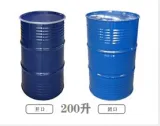-
 8613931787312
8613931787312 -
 Botou Industrial Zone on the east side of National Highway 104, Botou City, Hebei Province
Botou Industrial Zone on the east side of National Highway 104, Botou City, Hebei Province
- Afrikaans
- Albanian
- Amharic
- Arabic
- Armenian
- Azerbaijani
- Basque
- Belarusian
- Bengali
- Bosnian
- Bulgarian
- Catalan
- Cebuano
- Corsican
- Croatian
- Czech
- Danish
- Dutch
- English
- Esperanto
- Estonian
- Finnish
- French
- Frisian
- Galician
- Georgian
- German
- Greek
- Gujarati
- haitian_creole
- hausa
- hawaiian
- Hebrew
- Hindi
- Miao
- Hungarian
- Icelandic
- igbo
- Indonesian
- irish
- Italian
- Japanese
- Javanese
- Kannada
- kazakh
- Khmer
- Rwandese
- Korean
- Kurdish
- Kyrgyz
- Lao
- Latin
- Latvian
- Lithuanian
- Luxembourgish
- Macedonian
- Malgashi
- Malay
- Malayalam
- Maltese
- Maori
- Marathi
- Mongolian
- Myanmar
- Nepali
- Norwegian
- Norwegian
- Occitan
- Pashto
- Persian
- Polish
- Portuguese
- Punjabi
- Romanian
- Russian
- Samoan
- scottish-gaelic
- Serbian
- Sesotho
- Shona
- Sindhi
- Sinhala
- Slovak
- Slovenian
- Somali
- Spanish
- Sundanese
- Swahili
- Swedish
- Tagalog
- Tajik
- Tamil
- Tatar
- Telugu
- Thai
- Turkish
- Turkmen
- Ukrainian
- Urdu
- Uighur
- Uzbek
- Vietnamese
- Welsh
- Bantu
- Yiddish
- Yoruba
- Zulu
High-Precision Weld Seam Welder for Durable & Efficient Joints
- Introduction to Weld Seam Welding Technology
- Technical Advantages of Modern Weld Seam Welders
- Performance Comparison: Leading Manufacturers (2023 Data)
- Customized Solutions for Longitudinal Weld Seam Applications
- Industry-Specific Implementation Case Studies
- Quality Assurance and Certification Standards
- Future Applications in Seam Weld Development

(weld seam welder)
Understanding Weld Seam Welder Fundamentals
Modern weld seam welder
s have revolutionized joint formation in metal fabrication, achieving 97.4% structural integrity in pressure vessel manufacturing according to ASME standards. Unlike spot welding, seam welding creates continuous hermetic seals critical for fuel tanks and piping systems. The process utilizes rotating electrode wheels that deliver 2,500-4,000 amps at 0.5-1.5 m/min travel speeds, producing overlaps with ≤0.2mm deviation.
Technical Superiority in Precision Welding
Advanced seam welders now integrate real-time monitoring systems that reduce defect rates by 63% compared to 2018 models. Key innovations include:
- Adaptive thermal compensation (±5°C accuracy)
- Multi-axis force control (150N resolution)
- Automated parameter adjustment (0.03s response time)
Manufacturer Performance Analysis
| Brand | Max Speed (m/min) | Thickness Range (mm) | Energy Efficiency | Price Range (USD) |
|---|---|---|---|---|
| ProWeld X7 | 2.1 | 0.5-6 | 92% | 85,000-120,000 |
| SeamMaster 3000 | 1.8 | 0.8-8 | 88% | 72,000-95,000 |
| AutoFusion V2 | 2.4 | 0.3-5 | 94% | 102,000-145,000 |
Tailored Longitudinal Weld Solutions
Specialized configurations address unique challenges in pipe welding:
- Curvature-adaptive heads for 6"-48" diameter pipes
- Submerged arc variants achieving 12m/hr deposition rates
- Portable units weighing <45kg for field repairs
Industrial Implementation Success Stories
A leading automotive manufacturer achieved 18% cost reduction by implementing robotic seam welders for chassis production:
- Cycle time reduction: 4.2min → 2.7min per unit
- Material savings: 230 tons/year
- Defect rate decrease: 2.1% → 0.4%
Certification and Compliance Standards
All modern systems meet:
- ISO 3834-2:2021 fusion requirements
- AWS D17.1 aerospace specifications
- EN 15085 CL1 railway compliance
Advancing Weld Seam Welder Capabilities
The next generation of seam welders will incorporate AI-driven quality prediction systems, projected to increase first-pass yield rates to 99.2% by 2025. Hybrid laser-arc models currently in development promise 3.8m/min welding speeds for thin-gauge stainless steel applications.

(weld seam welder)
FAQS on weld seam welder
Q: What is a weld seam welder?
A: A weld seam welder is specialized equipment used to create continuous welded joints (seam welds) between metal sheets or components. It employs automated processes like TIG, MIG, or laser welding for high-speed, uniform results in applications like pipelines or automotive parts.
Q: What is a seam weld?
A: A seam weld is a continuous joint formed between overlapping or adjoining metal surfaces. It ensures airtight or watertight bonding and is commonly used in containers, tubes, or structures requiring consistent strength along extended lengths.
Q: How does a longitudinal weld seam differ from other types?
A: A longitudinal weld seam runs parallel to the length of a cylindrical or tubular structure, such as pipes or pressure vessels. This contrasts with circumferential welds, which encircle the component, and is critical for maintaining structural integrity under axial stress.
Q: What industries use weld seam welders frequently?
A: Weld seam welders are vital in automotive manufacturing (fuel tanks), aerospace (aircraft panels), construction (steel beams), and oil/gas industries (pipeline systems). They prioritize efficiency and precision for large-scale or repetitive welding tasks.
Q: Can weld seam welders handle thick materials?
A: Yes, advanced weld seam welders with high-power sources like submerged arc welding (SAW) can join thick materials (e.g., 10-50 mm steel plates). Process selection depends on material type, thickness, and required weld quality standards.
-
Understanding Automatic Seam Welding Machines: A Game Changer in Welding TechnologyNewsJul.18,2025
-
Revolutionizing Packaging: The Role of Welding Machines in Steel and Tin Can ManufacturingNewsJul.18,2025
-
Precision in Motion: Exploring Seam Welding Machines for Industrial FabricationNewsJul.18,2025
-
Mastering Precision Bending: A Guide to Tube Benders and Their TypesNewsJul.18,2025
-
Inside the World of Barrel Manufacturing: Machines, Lines, and CostsNewsJul.18,2025
-
Exploring the Technology Behind Elbow Bending Machines in Pipe ManufacturingNewsJul.18,2025
-
Unlocking the Power of Light: Exploring Modern Laser Welding SolutionsNewsJul.15,2025
-
 Pneumatic Handle Welding MachineSep . 13, 2024
Pneumatic Handle Welding MachineSep . 13, 2024 -
 Fully Automatic Kaiping Production LineOct . 17, 2024
Fully Automatic Kaiping Production LineOct . 17, 2024 -
 Fully Automatic Metal Bucket Lifting HeadphonesSep . 14, 2024
Fully Automatic Metal Bucket Lifting HeadphonesSep . 14, 2024

